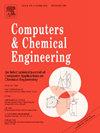Machine learning-guided space-filling designs for high throughput liquid formulation development
IF 3.9
2区 工程技术
Q2 COMPUTER SCIENCE, INTERDISCIPLINARY APPLICATIONS
引用次数: 0
Abstract
Liquid formulation design involves using a relatively limited experimental budget to search a high-dimensional space, owing to the combinatorial selection of ingredients and their concentrations from a larger subset of available ingredients. This work investigates alternative shampoo formulations. A space-filling design is desired for screening relatively unexplored formulation chemistries. One of the few computationally efficient solutions for this mixed nominal-continuous design of experiments problem is the adoption of maximum projection designs with quantitative and qualitative factors (MaxProQQ). However, such purely space-filling designs can select experiments in infeasible regions of the design space. Here, stable products are considered feasible. We develop and apply weighted-space filling designs, where predictive phase stability classifiers are trained for difficult-to-formulate (predominantly unstable) sub-systems, to guide these experiments to regions of feasibility, whilst simultaneously optimising for chemical diversity by building on MaxProQQ. This approach is extendable to other mixed-variable design problems, particularly those with sequential design objectives.
机器学习引导的高通量液体配方开发的空间填充设计
液体配方设计涉及使用相对有限的实验预算来搜索高维空间,因为从更大的可用成分子集中组合选择成分及其浓度。这项工作调查替代洗发水配方。需要一种空间填充设计来筛选相对未开发的配方化学物质。对于这种混合名义-连续实验设计问题,为数不多的计算效率解决方案之一是采用带有定量和定性因素的最大投影设计(MaxProQQ)。然而,这种纯粹的空间填充设计可以在设计空间的不可行的区域选择实验。在这里,稳定的产品被认为是可行的。我们开发和应用加权空间填充设计,其中预测相稳定性分类器被训练为难以制定(主要是不稳定的)子系统,以指导这些实验到可行性区域,同时通过建立在MaxProQQ上优化化学多样性。这种方法可以扩展到其他混合变量设计问题,特别是那些具有顺序设计目标的问题。
本文章由计算机程序翻译,如有差异,请以英文原文为准。
求助全文
约1分钟内获得全文
求助全文
来源期刊

Computers & Chemical Engineering
工程技术-工程:化工
CiteScore
8.70
自引率
14.00%
发文量
374
审稿时长
70 days
期刊介绍:
Computers & Chemical Engineering is primarily a journal of record for new developments in the application of computing and systems technology to chemical engineering problems.
 求助内容:
求助内容: 应助结果提醒方式:
应助结果提醒方式:


